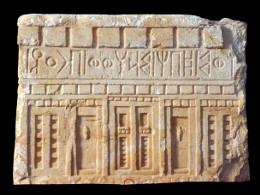
CSAI
Corpus of South Arabian Inscriptions
The ASA (Ancient South Arabian) corpus is one of the most interesting collections of epigraphic documents of the Semitic world, first and foremost for its vastness. With its over 15,000 inscriptions, it is the first-hand, written documentation of the culture that flourished in South Arabia from the late second millennium BC to the sixth century AD. At present, CSAI contains a collection of some 8,600 texts, for the most part digitized by the team of the University of Pisa under the direction of A. Avanzini.
They are mostly non-Sabaic inscriptions, namely the Qatabanic, Ḥaḍramitic and Minaic inscriptions. The decision to begin with these corpora was taken with the aim of giving an idea of the complexity of the ASA languages which scholars of Semitic philology all too often identify with Sabaic. Qatabanic, Ḥaḍramitic, Minaic are not only a label tied to the imagination of modern scholars: they correspond to an historical reality.
Whoever wrote an inscription appearing in these corpora considered himself Qatabanian, Ḥaḍrami or Minaean, owing to the fact that each identity was linked to a political entity, a religion, and a language. The identity of the writer or at least his "supposed" identity, is the only objective criterion for structuring the South Arabian epigraphic corpus. However, this statement is not completely true for Sabaic, since this language, due to its great prestige, has been adopted sometimes by populations that did not consider themselves as Sabaeans. Furthermore, within these corpora, certain groups of inscriptions have been identified that are characteristic of the specific geographic region they come from, or that are marginal to the documentation from the centre of the kingdom. These include marginal Qatabanic, namely the Qatabanic inscriptions from the high plateau, or marginal Minaic, the inscriptions in Minaic language originating beyond the borders of the Minaean kingdom. As for the Sabaic inscriptions, given the great many texts and the very long time span of this corpus, the material has been divided and catalogued in accordance with the chronology traditionally adopted by specialists of ASA languages. The insertion in the archive of the Sabaic texts is a work in progress. A corpus of minuscule inscriptions has been created to highlight the specificity of the documentation in this writing typology with respect to the monumental texts. The CSAI contains also collections of epigraphic and an-epigraphic objects according to their deposit: those housed in European museums, mainly catalogued during the MENCAWAR and MEDINA projects; those from the Yemeni museums, digitized during the CASIS project; those from some USA museums, catalogued within the DASI project.
Whoever wrote an inscription appearing in these corpora considered himself Qatabanian, Ḥaḍrami or Minaean, owing to the fact that each identity was linked to a political entity, a religion, and a language. The identity of the writer or at least his "supposed" identity, is the only objective criterion for structuring the South Arabian epigraphic corpus. However, this statement is not completely true for Sabaic, since this language, due to its great prestige, has been adopted sometimes by populations that did not consider themselves as Sabaeans. Furthermore, within these corpora, certain groups of inscriptions have been identified that are characteristic of the specific geographic region they come from, or that are marginal to the documentation from the centre of the kingdom. These include marginal Qatabanic, namely the Qatabanic inscriptions from the high plateau, or marginal Minaic, the inscriptions in Minaic language originating beyond the borders of the Minaean kingdom. As for the Sabaic inscriptions, given the great many texts and the very long time span of this corpus, the material has been divided and catalogued in accordance with the chronology traditionally adopted by specialists of ASA languages. The insertion in the archive of the Sabaic texts is a work in progress. A corpus of minuscule inscriptions has been created to highlight the specificity of the documentation in this writing typology with respect to the monumental texts. The CSAI contains also collections of epigraphic and an-epigraphic objects according to their deposit: those housed in European museums, mainly catalogued during the MENCAWAR and MEDINA projects; those from the Yemeni museums, digitized during the CASIS project; those from some USA museums, catalogued within the DASI project.
COLLECTIONS BY DEPOSIT

Collection of the objects from the European museums
Since the beginning of the nineteenth century, the political presence and scientific expeditions of Europeans in the Arabian Peninsula inaugurated the establishment of European private and public collections of ancient South Arabian material, which constantly increased during the following decades.
Collection of the objects from the USA museums
The Collection of the objects from the USA museums in DASI gathers the South Arabian antiquities housed in USA museums and private collections.